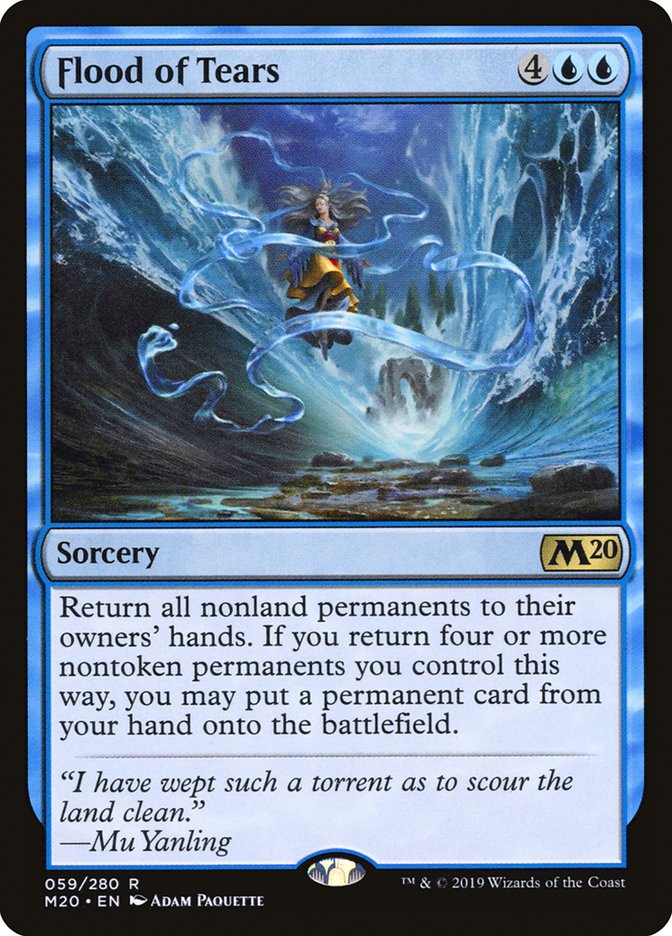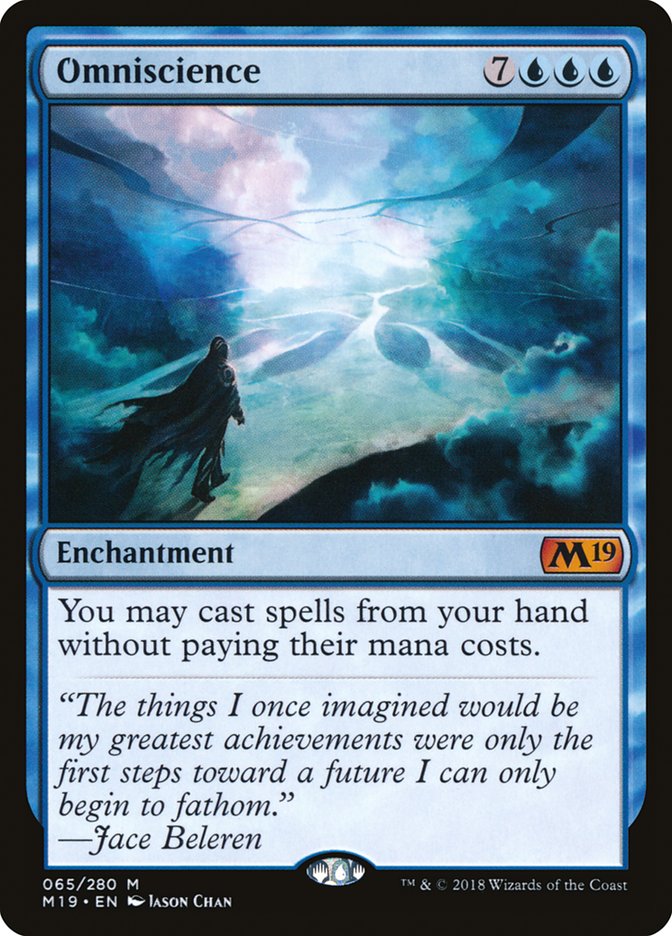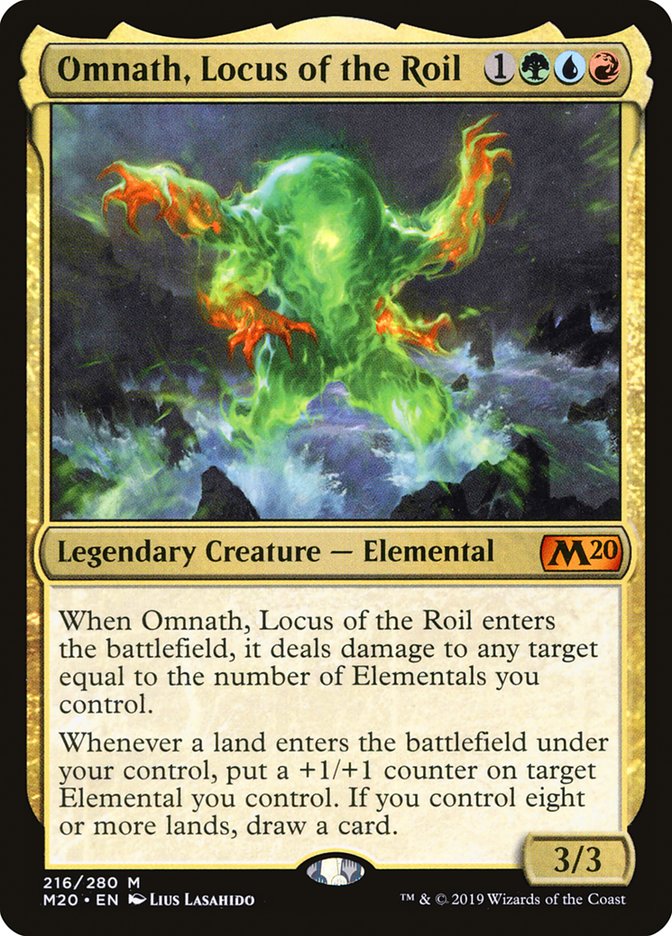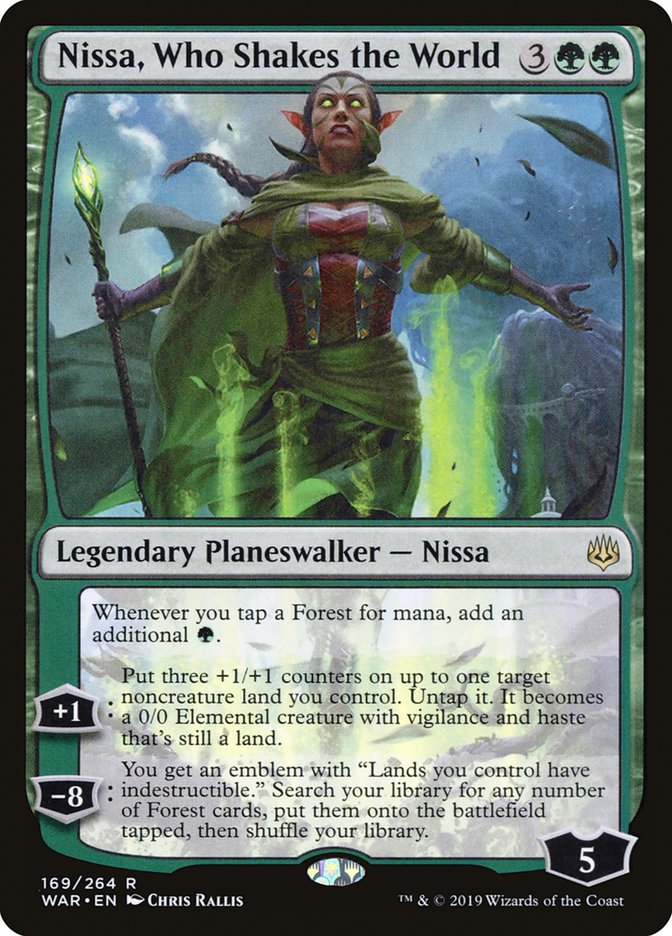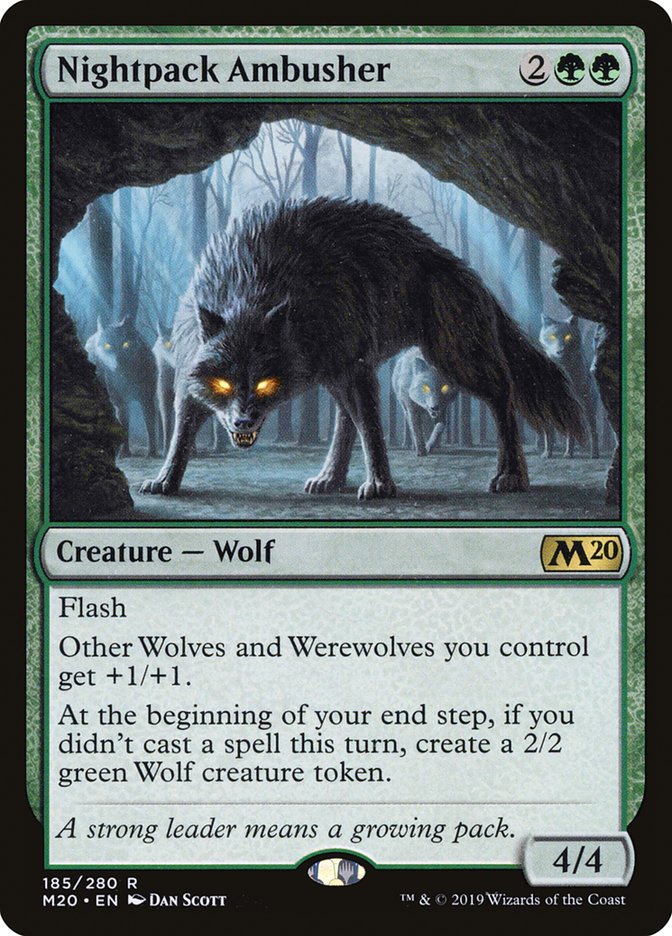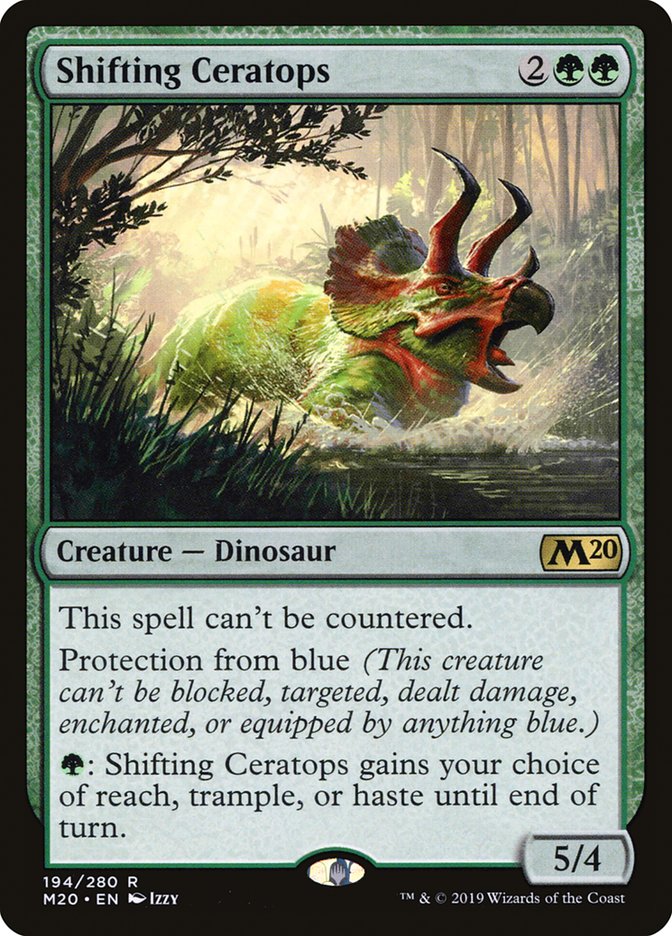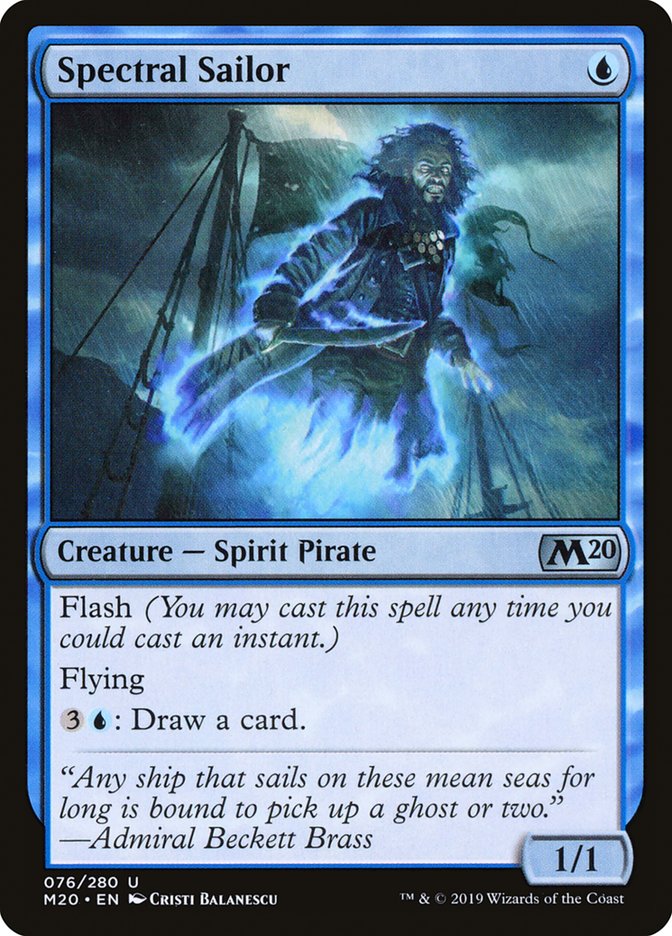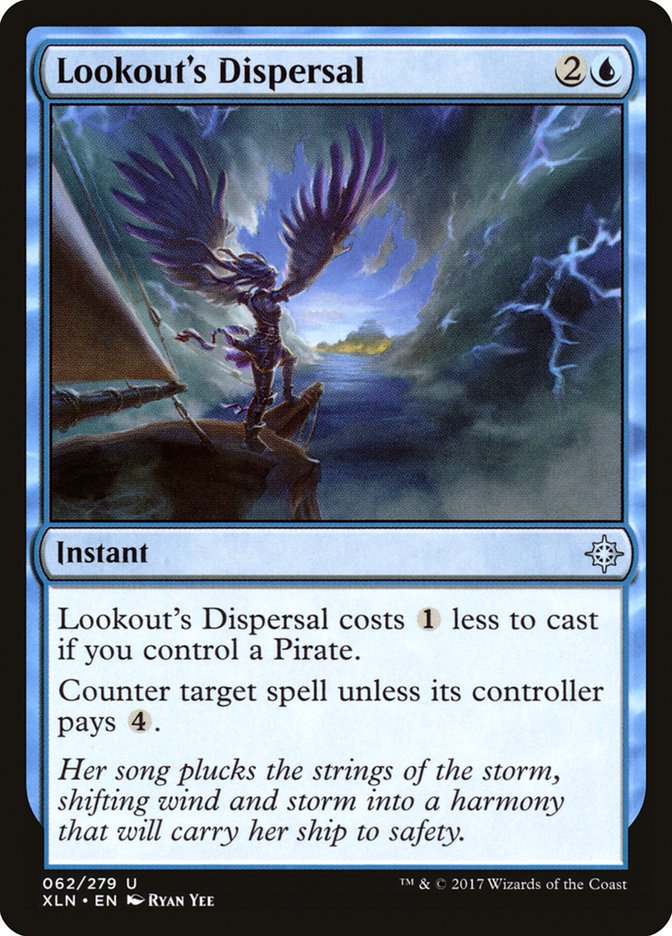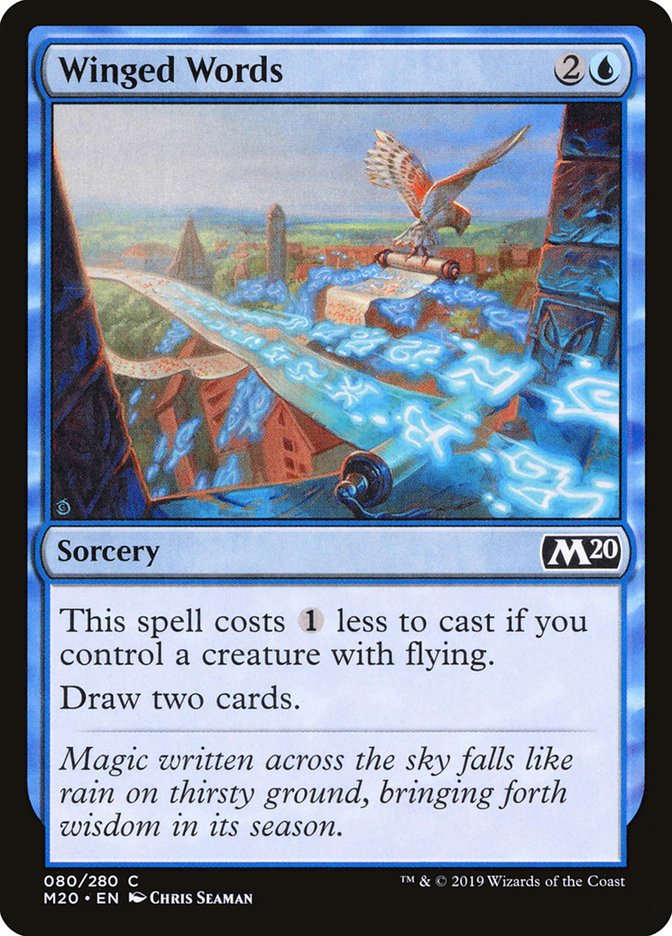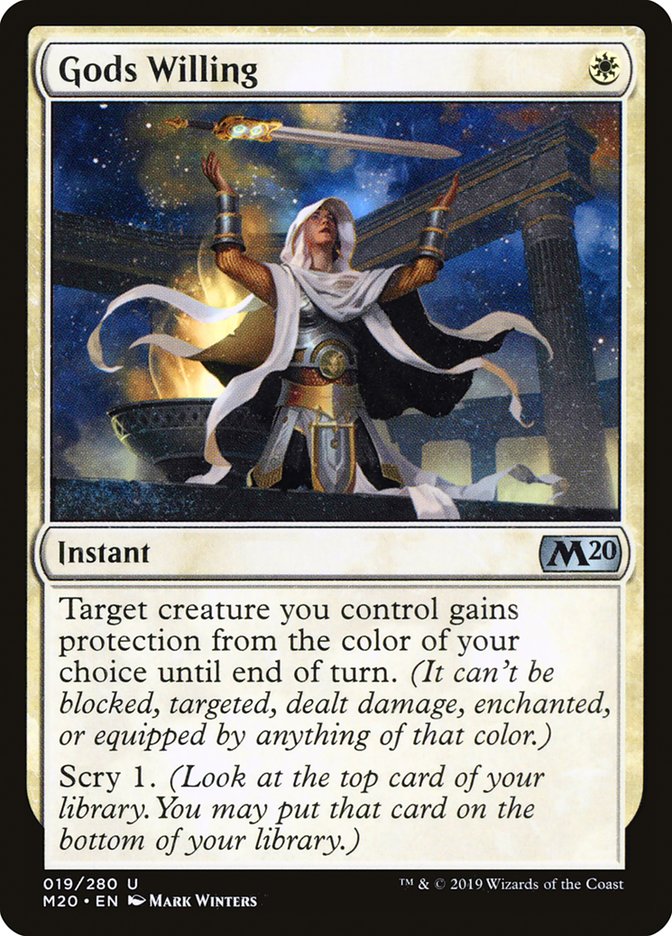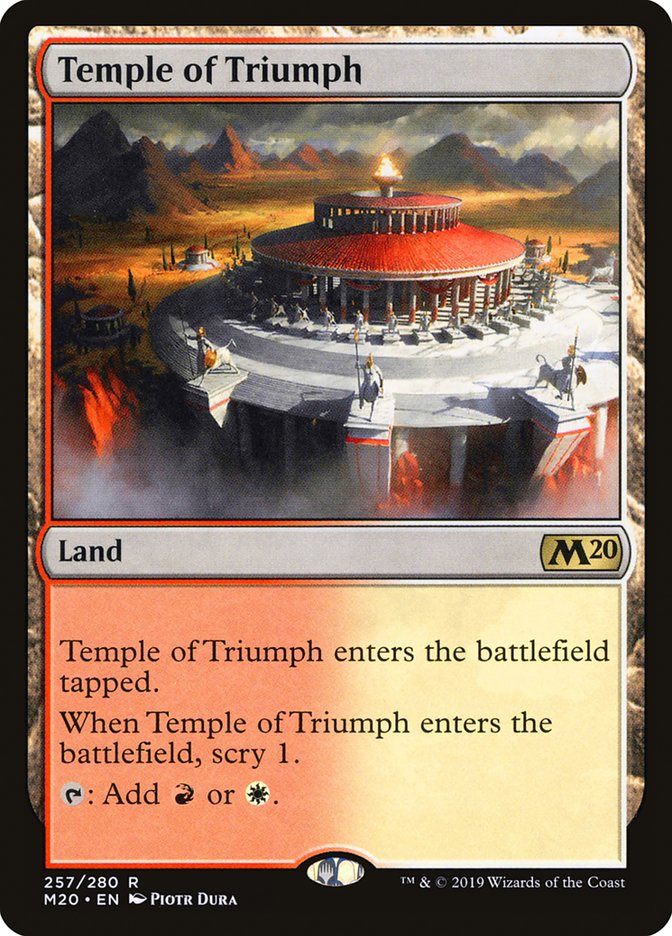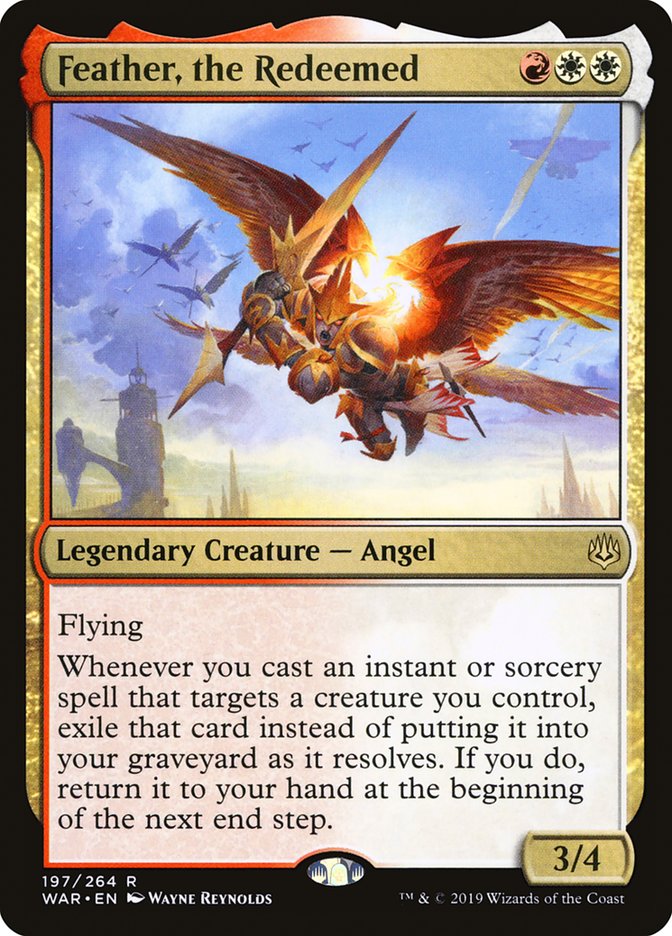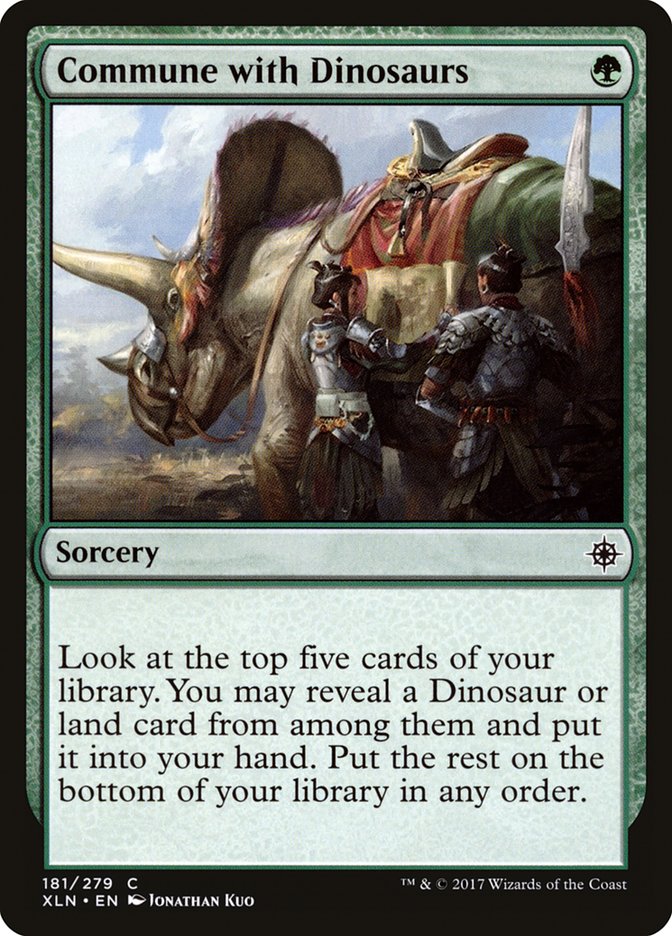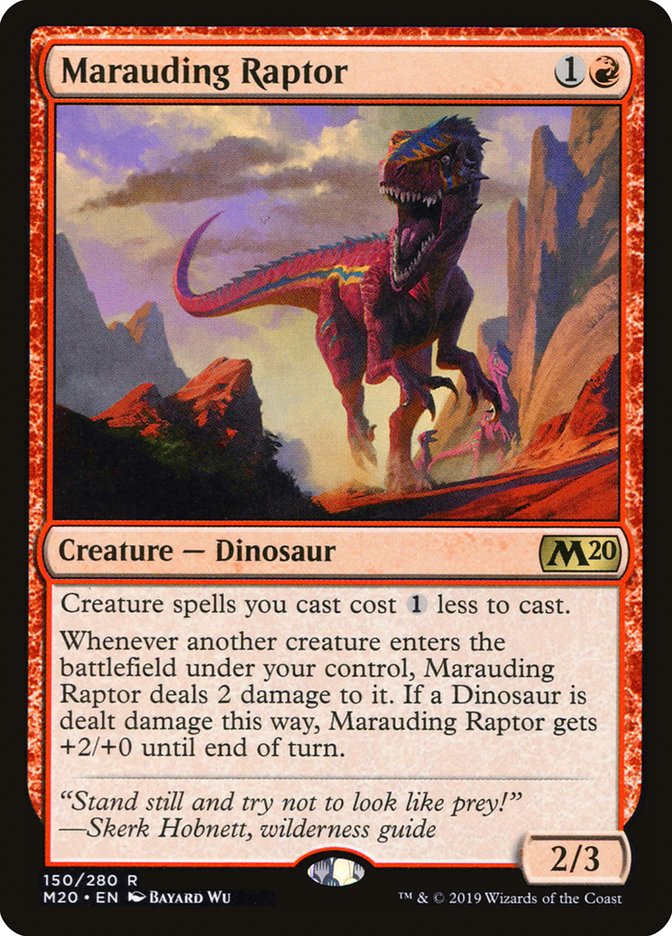We’ve seen plenty of Core Set 2020 Standard gameplay thanks to MTG Arena, but SCG Worcester will be its first test in a tournament setting.
Similar to last season, Standard has a few decks that are slightly stronger than the others, but for the most part, you can play whatever strategy you want. Maybe the play patterns for the format aren’t ideal thanks to all the planeswalkers and how snowball-y everything is, but it’s still wide open.
As I write this, there are still a couple of days before submission, but if I had to choose now, I’d play Temur Flood.
Creatures (22)
- 4 Llanowar Elves
- 4 Hydroid Krasis
- 4 Risen Reef
- 3 Omnath, Locus of the Roil
- 4 Leafkin Druid
- 3 Cavalier of Thorns
Planeswalkers (4)
Lands (26)
Spells (8)
Sideboard

Temur Flood has one of the best late-games in Core Set 2020 Standard. The only thing that reasonably goes over the top of it is Nexus of Fate. Even Command the Dreadhorde can only create so much advantage and most of it is undone by a single Flood of Tears.
This deck develops its mana and then finds something to do with it. Similar decks have existed (like Sultai Dreadhorde), except instead of playing a game-winning Command the Dreadhorde, we can bounce both players’ permanents, giving us a huge tempo boost when we get to cast something for free.
Some versions of this deck play a copy or two of Omniscience to put onto the battlefield with Flood of Tears, but this version uses Flood more as a tempo tool than anything. Since this version isn’t trying to Flood every single turn, there’s no need for Tamiyo, Collector of Tales either. As a card advantage engine (and way to search for specific pieces, like Hydroid Krasis or Flood of Tears), Tamiyo is solid, but I’d rather have the battlefield presence from something like Omnath, Locus of the Roil. You can’t loop Flood of Tears with Tamiyo anymore, but that was typically not a necessity anyway.
You don’t need removal in your maindeck. There are very few must-kill creatures out there and those can mostly be handled with Flood of Tears. Even though you’d prefer to remove an opposing Llanowar Elves or Risen Reef from the battlefield, doing so will cost a card and tempo, so your best bet is to focus on doing your own thing better than your opponent.
The splash for Omnath, Locus of the Roil happened because of wanting some way to remove opposing permanents without costing you too much. Omnath can pick off utility creatures and low-loyalty planeswalkers while still being a threat and an engine. It’s the perfect way for a small splash to help fill a gap while still maintaining the overall goal of the deck. The splash isn’t free, but it doesn’t cost you too much either.
There’s a tension to wanting as many Forests for Nissa, Who Shakes the World as possible, but you really don’t need to. If you have an active Nissa and are casting something like Hydroid Krasis, you’re probably in fine position. Being able to scry early with Temple of Mystery in order to facilitate getting you to that point is far more important.
With this list, I don’t particularly want to play against Simic Nexus, Mono-Red Aggro, or any sort of Simic Flash / Mono-Blue Aggro deck. That said, those matchups are completely winnable, especially after sideboarding. The color hosers from Core Set 2020 are incredible, so get used to seeing sideboards with ten copies of them.
Even though the color hosers are incredibly powerful, I mostly dislike them. Can Mono-Red Aggro beat Cerulean Drake? Absolutely, but the games are dramatically different when a color hoser isn’t drawn, plus there’s a significant lack of counterplay to them available.
Overall, Temur Flood is a solid deck with game against everyone that also gives you a ton of agency.
Creatures (20)
Lands (24)
Spells (16)
Sideboard

Martin Juza recently hit Mythic with a brand-new deck. Since then, it’s been all over the ladder. I’d make some changes to this list, like adding more Opts and playing some Lookout’s Dispersals and maybe a Wizard’s Retort. Nightpack Ambusher is quite strong and gives this Mono-Blue Aggro-style deck some real game against other aggressive decks like Gruul Midrange and Mono-Red Aggro.
My biggest fear when registering a deck like this is that I won’t be able to beat Veil of Summer. Shifting Ceratops is also an issue, but one that is easily solved by Entrancing Melody (on one of their green creatures) or a Nightpack Ambusher. You tend to get a lot of free wins in pre-sideboard games when your opponent can’t deal with your wall of countermagic, but you have to pivot post-sideboard. The addition of green allows you to do that quite nicely.
If you want to play traditional Mono-Blue Aggro, it might be an even stronger deck.
Creatures (19)
- 4 Siren Stormtamer
- 3 Merfolk Trickster
- 3 Tempest Djinn
- 2 Pteramander
- 4 Spectral Sailor
- 3 Brineborn Cutthroat
Lands (19)
- 19 Island
Spells (22)
Sideboard

Faerie Miscreant was fine, but it’s nothing compared to Spectral Sailor. Getting something to do with your mana is nice, but being a Pirate finally gives you enough to play some copies of Lookout’s Dispersal. Brineborn Cutthroat provides an additional Pirate, so now Mono-Blue is a Pirate deck, not a Wizard deck. You have eleven Pirates for Lookout’s Dispersal and seven Wizards for Wizard’s Retort, both of which I think are fine numbers.
Winged Words is interesting, but it’s honestly not that much stronger than Chart a Course. With Brineborn Cutthroat, Chart a Course might be even stronger. I would only play a single copy maindeck because you don’t want to draw too many of them, but it’s a fine inclusion.
Unsummon and Aether Gust solve a lot of issues. You used to have to struggle to deal with a resolved permanent, but not anymore. Between the addition of a mana sink, Unsummon, and Lookout’s Dispersal, Mono-Blue Aggro is much stronger than it used to be.
Creatures (18)
- 4 Adanto Vanguard
- 2 Legion Warboss
- 4 Dreadhorde Arcanist
- 4 Tenth District Legionnaire
- 4 Feather, the Redeemed
Planeswalkers (3)
Lands (23)
Spells (16)

Boros Feather is secretly one of the best choices for this weekend and a lot of that is thanks to Gods Willing. Not only does it protect your threats from more than Sheltering Light, it can also function as a means of evasion.
The deck is also completely misunderstood. Like Heroic decks of the past, Boros Feather isn’t just an aggro deck. It has the cheapest removal of any deck in Standard, one of the strongest draw engines, and, thanks to Gods Willing, the best way to protect that engine.
Most lists are only playing 22 lands, but Temple of Triumph (along with Tenth District Legionnaire and Gods Willing) gives you enough card selection that I’m comfortable playing an extra land. I would much rather hit my land drops to be able to play Feather, the Redeemed with protection than to miss land drops, fall behind, and be forced to spend precious mana that I don’t have in order to find more lands.
Your sideboard is one of the weakest parts of the deck, as Boros doesn’t have access to the best color hosers. It has some reasonable ways to help your weaker matchups, but for the most part, you’re going to have more equity in Game 1s. However, with Feather being the most misunderstood deck in Core Set 2020 Standard, it’s possible that your opponents mess up their sideboarding.
The thing I’m most scared of is Flood of Tears. In that matchup, you need to focus on getting them dead rather than accumulating value with Feather. Tocatli Honor Guard is also a gigantic beating against their Elemental package.
Creatures (27)
- 4 Llanowar Elves
- 3 Regisaur Alpha
- 4 Ripjaw Raptor
- 3 Drover of the Mighty
- 3 Thorn Lieutenant
- 4 Gruul Spellbreaker
- 4 Marauding Raptor
- 1 Voracious Hydra
- 1 Shifting Ceratops
Planeswalkers (5)
Lands (23)
Spells (5)
Sideboard

I’ve tried a lot of different Dinosaur lists at this point and merging Dinosaurs with normal Gruul seems like the strongest. By not being all-in on the Dinosaurs plan, you lose out on Commune with Dinosaurs and its ability to find Marauding Raptor on Turn 2, but the overall consistent strength of your cards is worth it.
Savage Stomp and Ranging Raptors are fine cards in certain matchups and with certain draws, but they aren’t always great. Cards like Thorn Lieutenant and Gruul Spellbreaker are more solid across the board. You still get to keep the Marauding Raptor nut draws too.
This deck still has some issues. Cavalier of Thorns is particularly huge and you have no choice but to attack around it. In fact, any deck that aims to go over the top of you can be problematic. You’re not fast enough and don’t have enough reach to beat Nexus, at least without some sideboard cards. The same can be said of the Temur Flood matchup.
Gruul Dinosaurs is still another solid choice and has the potential to prey on the Tier 2 metagame.
During the recording of this week’s Arena Decklists Podcast, I basically convinced myself that Mono-Blue Aggro would be a stronger choice than Temur Flood. Consider that my official pick for the weekend.
As I mentioned earlier, the margins between the best deck and the eighth-best deck are relatively slim, so pick a deck you like, tune it, and enjoy!


